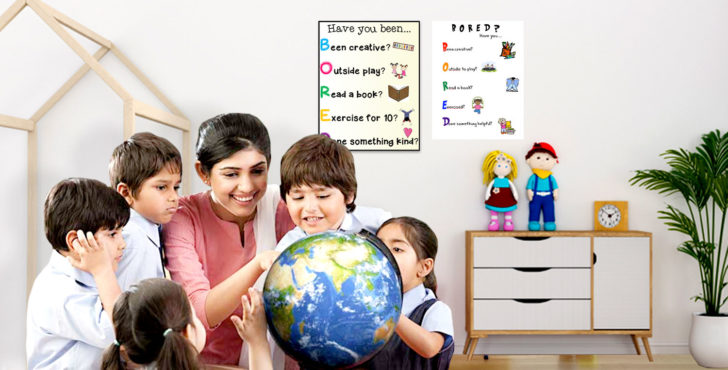Recommended Advice To Choosing Italian Primary Teaching Didactics
Wiki Article
What Kind Of Educational And Informative Material Is Needed For The Primary And Kindergarten Classes?
Many kindergartens or primary schools require a range of educational, informational and other materials to assist their pupils in developing and learning. There are certain materials that may be required for curriculum materials - These are materials created to aid and support the learning goals set out in the school's curricula. These materials may comprise textbooks, workbooks lesson plans, and other resources.
Classroom supplies. Supplies like glue, paper, pencils, scissors as well as other art tools will help young children finish their work.
Educational technology: In the current digital age, educational technology such as tablets, computers and interactive whiteboards may help students learn and offer extra resources for students.
Books- To help encourage language and reading development, kindergartens and primary schools require a wide selection of books that are appropriate for children.
Children can improve their skills in problem-solving and spatial awareness through manipulatives such as blocks or games. They can also play puzzles, games, and blocks.
Visual aids like posters maps, charts and posters are visual aids that aid children in learning and retention of essential concepts.
Art and music materials Music and art materials like instruments, paints, and clay provide children with a way to express their creativity and encourage self-expression.
Safety supplies - It's important to provide safety materials like fire extinguishers and posters of emergency procedures, in order to ensure that staff and students are protected.
In general, primary and kindergarten schools need a variety of educational and informational tools to provide a stimulating and secure learning environment for their students. Check out the best scuola infanzia for site advice.
What Maths Teaching Aids And Educational Materials Are Recommended In Italian Nurseries?
Materials for teaching mathematics and educational aids can assist youngsters in Italian nurseries to develop their spatial, numerical, and problem-solving skills. Examples of materials that are recommended include: Counting manipulations The use of counting manipulatives such as counting bears and blocks could help children improve their ability to count and fine motor skills and their hand-eye coordination.
Charts and number cards Cards and charts to teach your children how to count and learn numbers. These can include large, colorful numbers for the walls, as well as smaller cards that children can play with and manipulate.
Shape manipulatives. Shape manipulatives such as magnetic tiles or wooden puzzles can aid in the development of spatial reasoning and help teach children about the properties of different shapes.
Tools for measuring: Measuring instruments such as rulers, tapes for measuring, and scales are a great way for children to understand the concept of measurement and comparisons, as well as build their mathematical vocabulary.
Simple puzzles and games Simple puzzles and games like jigsaws and dominoes, or matching games can help develop children's problem-solving abilities, attention to detail and concentration.
Technology-based aids: Tablets and other technology-based aids like tablets that have educational math apps and games can engage children and provide additional tools for learning.
It is essential to use the material according to its developmental stage and ensure they are safe and suitable for children in the early years. Teachers and parents can make use of these materials to create exciting, interactive math games which stimulate children's curiosity and their passion for learning. Read the top rated schede didattiche matematica sostegno for website recommendations.

What Are The Recommended Science-Based Curriculums For Italian Kindergarten Schools?
Science didactic card can be great tool to teach children about the fundamentals of science. Here are a few examples of science-based didactic cards. The cards may include images of animals as well as their habitats in order to make the learning process more interesting.
Plant Cards: These cards can help children understand different characteristics and plants. To make learning more engaging, they can feature illustrations of plant growth stages and illustrations.
Weather cards: These help children to understand the effects of different kinds and weather conditions on the world. They can be illustrated using pictures of different kinds of weather like snow, rain and sun.
Space cards: Spacecards can aid children in understanding the solar system and various planets. The cards could include pictures of planets, their unique characteristics and other information.
Human Body Cards: These cards help children to learn about the different parts of their body as well as how they function. They may also include images depicting the functions of different body parts.
You should choose the science-based cards that are engaging, appropriate for ages 0-12 and enjoyable for toddlers. These cards can be utilized by caregivers and teachers to design interactive and enjoyable activities in science for children, which will stimulate their curiosity and excitement about learning. View the top rated materiale didattico scienze sostegno for website advice.

What Are The Materials Needed To Teach Geography In Italian Nursery Schools?
Italian nurseries employ geography-related materials to teach children about different cultures, environments and countries. Here are some examples of geography-related teaching materials: Maps. Maps can be used to help students understand geography, and also the geographic features of various countries and regions.
Globes Help children visualize the earth's surface and learn about the various continents and oceans.
Pictures and videos Images and videos from diverse places and cultures can help children learn about the variety of the world and gain an appreciation for different ways of life.
Books: Children's books that focus on different cultures could stimulate a child's curiosity and curiosity about the world.
Natural materials can assist children understand different ecosystems.
Field excursions. Children can learn about geography through hands-on learning and experiences at local parks, zoos, or museums.
It is vital to choose resources for geography education that are age-appropriate as well as culturally sensitive. They help caregivers and teachers to create fun and interactive activities that foster children's love of learning and curiosity.

